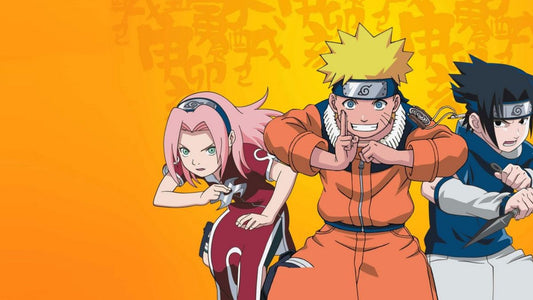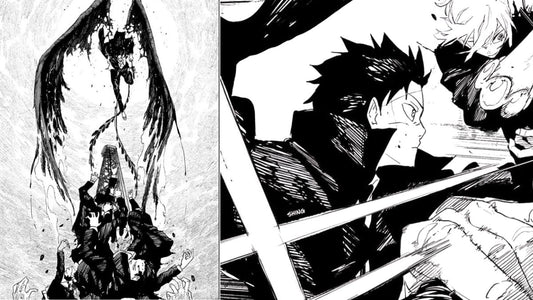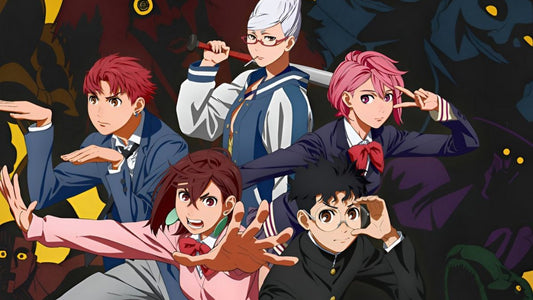
Investigating the Depths of Cultural Wealth in Dandadan
Dora NaletilićShare
Despite being unbelievably entertaining and silly, Dandadan has another side that makes it one of the coolest manga and anime currently on air. It provided us with exciting supernatural and occult aspects of the plot that we only saw in the best pieces of the horror genre that defined popular culture. It seems that the creator, Yukinobu Tatsu, 'absorbed' inspiration from many different parts of the culture and generated an incredible series that we know today.
Drawing Inspiration from Japanese Folklore
Observing through the currently 178 chapters of Dandadan, one can see that the Japanese folklore has been the mainstay of the series since its beginnings. Occult, supernatural, and even sometimes science-fiction themes are a major point of the Dandadan storyline, with the appearance of aliens, ghosts, demons, and many more, confirming that notion. Of course, being a Japanese piece of media created by a Japanese writer and illustrator, Dandadan has an abundance of Japanese folklore and legends.
For example, our favorite cat, Turbo Granny, is directly inspired by Japanese legends, specifically the lore of yokai, who are mostly identified as the evil spirits, which isn't the full truth—they are described as entities that express bewilderment or a feeling of dread. Nevertheless, Turbo Granny became a huge part of the Dandadan plot, even 'borrowing' its power from Ken Takakura to fight the occult and alien foes in the series. The same goes for Acrobatic Silky, who brought us to tears with its backstory and many other foes and allies that we came across in the Dandadan series. There are many more, but these examples emphasize Tatsu's willingness to showcase Japanese heritage to the world and enrich his series with very cool themes.
For more about yokai, check out JapanObjects website.
Expanding Cultural Aspects to Other Parts of the World
Tatsu didn't stop with inspiration from Japanese folklore only—throughout the manga series, there are references to American fiction and inclusion of other Asian cultures in Dandadan. Of course, most of those references are connected to legends and popular culture that defined, in this case, the genre of horror and science-fiction. For example, the 'alien' part of the Dandadan lore mostly references real-life happenings in the United States of America during the 1960s and 1970s—the UFO craze that sparked fear and lunacy among some of the American citizens. Area 51 has been referenced quite a few times in Dandadan, proving how far one country's cultural moment can reach almost all parts of the world.
Another recent reference to other culture was jiangshi, a 'hopping' vampire from Chinese folklore, serving as foes to our favorite grandma, Seiko. It seems that many other cultures are making their appearance in the hit series, hinting at the possible expansion of the Dandadan universe.
Using Famous Horror Genre Tropes to Include in Dandadan
How would one create a piece of media with occult elements without mentioning the 'father' of the horror genre, H.P. Lovecraft? This American science fiction and horror writer established foundations for the ominous part of the fictional genre, and if one reads the latest chapter of the Dandadan manga series, they will see Tatsu's obvious inspiration and reference in the story. One of the new characters that we met in the manga series is called Kashimoto, and he has special powers that give him insane strength and the ability to manipulate fire.
To cast his flames, Kashimoto uses a phrase, 'Aphoomzhah!,' which horror fans know as one of the references to H.P. Lovecraft's fictional universe, called 'Cthulhu Mythos,' that the writer started, and it eventually expanded to unimaginable depths. The phrase itself means 'Cold Flame,' and Kashimoto uses them to weaken the foe, letting Seiko and Payase finish the monster off. This is Tatsu's amazing way of giving flowers to one of the greatest, if not the greatest, fictional writers of all time, and it seems that this instance won't be the last reference we will see in the Dandadan manga series.
Conclusion: The Wealth of Cultural References That Define Dandadan
Going through all the facts and information about Yukinobu Tatsu and his work on Dandadan, one can definitely see why this manga series (and anime) became one of the most popular pieces of fictional media today. Fans are absolutely loving the silliness and entertainment of the Dandadan characters and plot, but also the occult and science-fiction themes that were inspired by many cultures across the world. Fusing those aspects together, Tatsu created a lovable and chaotic mess that gives you a whiplash of emotions with every chapter or episode.
The inclusion of other cultures probably confirms that Dandadan will have many more volumes and chapters in the future that will expand the lore of Dandadan to unimaginable depths. There is another aspect Tatsu can 'borrow' from H.P. Lovecraft, and that is creating an incredible universe that has been used for decades as the 'base' of every good horror story. At the end of the day, Tatsu could redefine the shōnen genre forever—if he didn't do it already.



